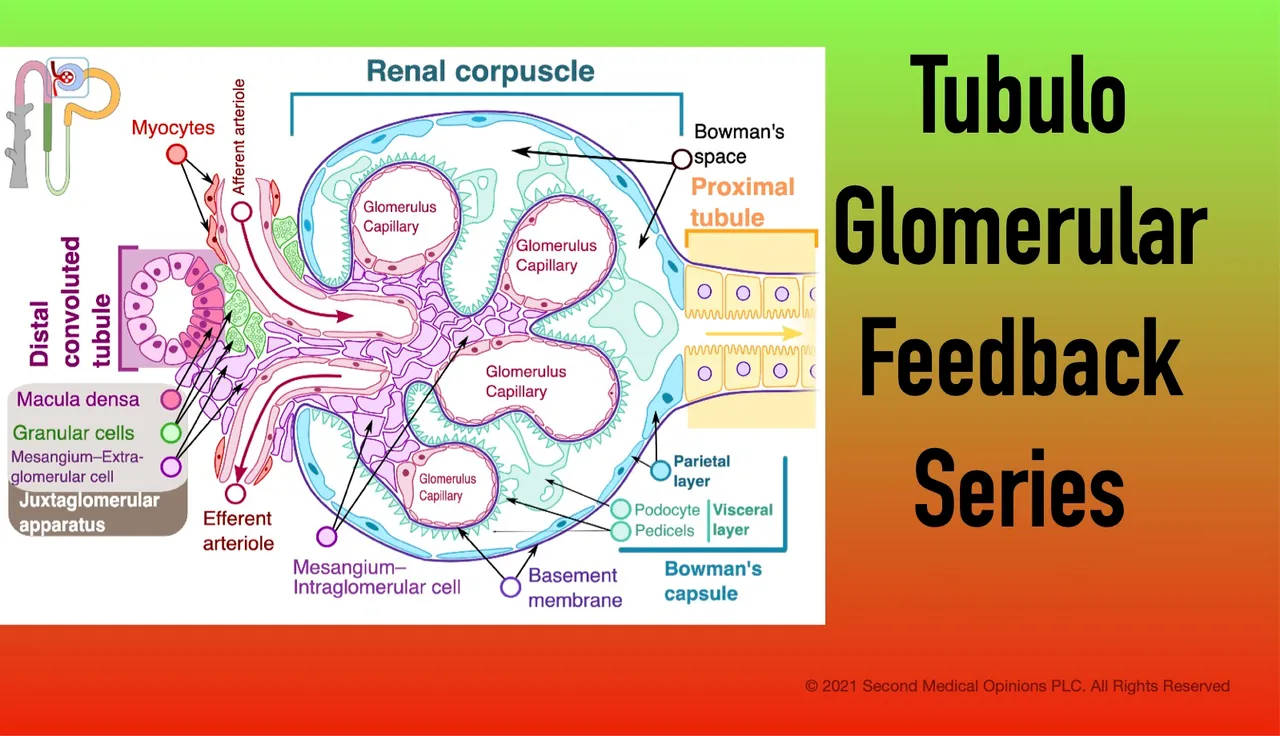
This article states that the AT1 receptor mediates vasoconstriction in the afferent and efferent arterioles.
This is done by signaling using Gq/11-protein and protein kinase C activation.
Angiotensin II causes constriction of the afferent arteriole by increasing calcium entry via voltage-sensitive, L-type channels, whereas the angiotensin II effects on the efferent arteriole are caused by calcium release from intracellular stores and calcium entry through voltage-independent calcium entry channels.
Credits
Renal Corpuscle Image. 2019. Downloaded under a Creative Commons Attribution-Share Alike 4.0 International License from Wikimedia Commons. Author: Shypoetess. No changes were made.
Posts in this series
The Macula Densa Cells May Sense Tubular Salt Content Using a NHE2 Exchanger
The Macula Densa Cells Also Can Sense Sodium and Chloride Concentrations Using the NKCC2 Transporter
MAP Kinases are Activated by Low Tubular NaCl and Stimulate COX-2 Expression
Inhibition of nNOS in the Macula Densa leads to an Exaggerated TGF Response
The Juxtaglomerular Granular Cells are More Numerous in the Afferent Arteriole
Angiotensin II, Mediated by AT1 Receptors, Stimulates Nitric Oxide Release in Afferent Arterioles